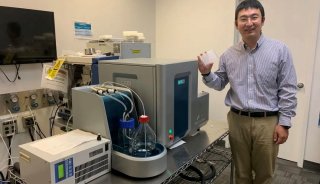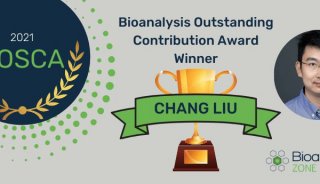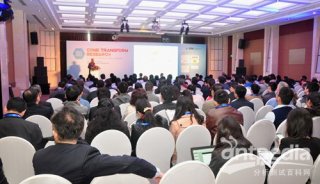实验室自动化与筛选协会2013亚洲会展主旨论坛简介
主旨论坛1: “Nano-flares”在循环癌细胞分析中的应用
Chad A. Mirkin博士,国际纳米技术研究所主任,美国西北大学化学系George B. Rathmann教授
Cancer metastasis is the leading cause of mortality among cancer patients. Indeed, most traditional methodsfor diagnosing it rely on analysis of secondary tumor sites after metastasis has already occurred. Therefore, the ability to detect metastatic cancer cells from patient blood samples, before the development of secondary tumors, would represent a revolutionary advance in cancer diagnostics. We have designed and synthesized a nanoparticle-based system, which moves toward accomplishing this goal. Nano-flares are spherical nucleic acid (SNA)-gold nanoparticle constructs, which are bound to displaceable fluorescent reporter strands. These structures have the ability to efficiently enter cells without the use of transfection agents and provide an intracellular fluorescence signal correlated with the concentration of a target molecule. Therefore, they can be used to translate traditional extracellular diagnostic approaches to an intracellular environment. Advantageously, this nanoconjugate system exhibits all of the novel cooperative properties of SNA-gold nanoparticle conjugates, including enhanced target hybridization, resistance to enzymatic breakdown and low immune response and can be easily combined with gene regulation technologies. Specifically, we have developed a functional assay for detecting multiple putative metastatic markers (such as Twist, vimentin and fibronectin) in circulating breast cancer cell populations. Furthermore, we have coupled nano-flare technology with flow cytometry to isolate these small breast cancer cell populations in cell culture and from whole blood samples for individual analysis. We are currently working to validate this novel nano-flare-based approach against traditionally-used assays, as well as to improve the sensitivity and specificity of nano-flares. We are also extending the capability of the system to address the need for multiplexed approaches, which allow for semi-quantitative detection of multiple mRNA targets simultaneously.
主旨论坛 2:中国首个靶向抗癌药埃克替尼的开发和上市
王印祥博士,浙江贝达药业有限公司总裁,首席科学家
Icotinib (Conmana), a small molecule targeting epidermal growth factor receptor (EGFR) for patients with non-small cell lung cancer (NSCLC), has been successfully developed by a Chinese pharmaceutical company, Zhejiang Betapharma Inc. Also belonging to the same sub-family called EGFR-TKIs, Iressa from AstraZeneca and Tarceva from Roch were approved by the FDA in 2003 and 2004, respectively. Eight years later, a group of scientists and entrepreneurs returned from overseas after over 10 years of studying and working in the US to put their own innovative targeted anticancer drug on the market. Conmana is the first small molecule targeting anticancer drug ever developed in China.
More importantly, Conmana was developed in patients from China, and thus is more appropriate for Chinese patients. The other two drugs have no pharmakinetic studies in Chinese patients at all. From the phase III trial (ICOGEN), it show that Icotinib provides similar efficacy but better tolerability than gefitinb (Iressa) in patients with NSCLC. This is so far the first and only randomized and multi-center head-to-head phase III trial ever done for the three EGFR-TKIs. Yan Sun, MD, of Cancer Hospital, Chinese Academy of Medical Sciences, Beijing, who was the principle investigator for this trial, collaborated with his colleagues from 27 centers nationwide.
They studied 399 patients with NSCLC who progressed after one or two chemotherapy regimens. PFS in the Icotinib arm was a median 35 days longer than Gefitinib (137 days vs. 102 days; hazard ratio [HR] 0.84; 95% CI [0.67–1.05]). Adverse response rate in Icotinib group was 60.5%, which was significantly lower than that in the Gefitinib group (70.4%; P=0.04). Mutations were identified in 68 patients, among which 29 were in the icotinib arm and 39 were in the gefitinib arm. The mutational analysis results consistent with the other two EGFR-TKIs, which show much better efficacy in patients with EGFR mutation.
Since Conmana to market in August 2011, it made 430 million in sales. In the past 2012, Conmana sales added up to 360 million. The average monthly sales rose 168 percent over the previous year. Conmana annual sales is expected to break through 500 million in 2013
-
产品技术
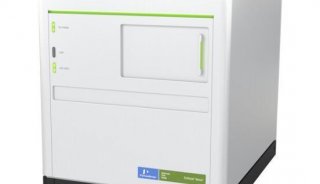
-
企业风采
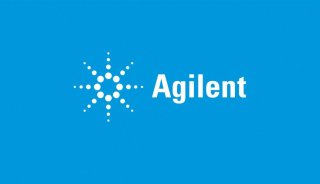
-
企业风采

-
企业风采
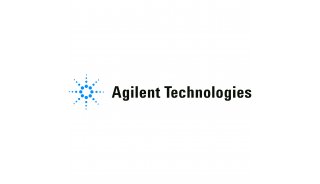
-
产品技术
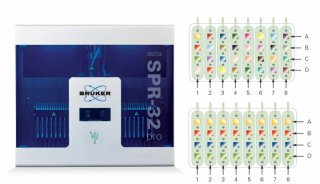
-
产品技术
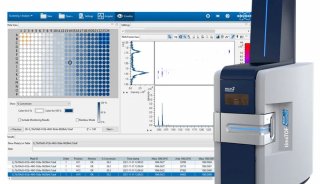
-
产品技术
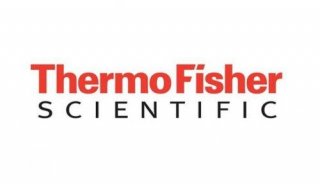
-
产品技术













